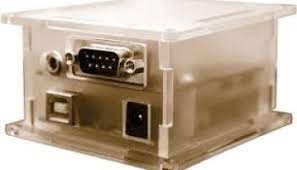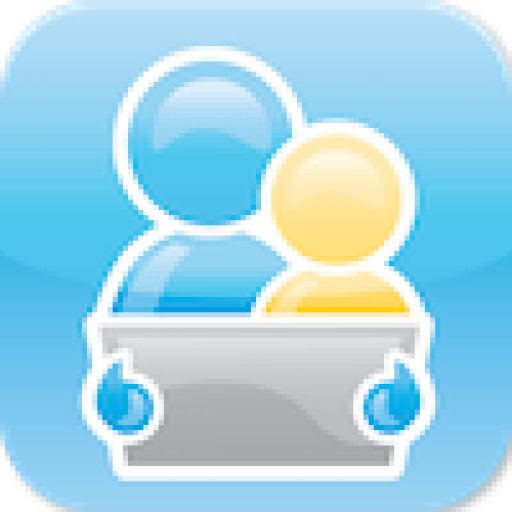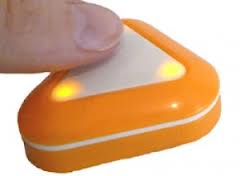This blog post has been updated. Please see the new entry at http://www.janefarrall.com/blog/2013/09/29/how-do-i-use-a-switch-with-an-ipad-ios-7-overview/
I last blogged about overall switch access to the iPad/iPhone/iPod touch in June – and there have been quite a few changes in the meantime. So – time for an update!
At this stage, there are two sorts of switch access to the iPad – switch access to individual apps which have built-in scanning and switch access to iOS through VoiceOver.
And to paraphrase what I said in my last update – I just want to quickly explain that when I talk about switch access, I specifically mean an external switch that someone can press to make a selection on an iPad or iPhone (or an app which allows me to use the iPad screen as a switch). Switches come in all different shapes and sizes. To read more about switches and switch access click here. To read more about VoiceOver check out Luis Perez’s excellent website or David Woodbridge’s podcasts on the Vision Australia website.
Switch Access to the iOS
The greatest growth since my last update has been in the area of switch interfaces (and other interfaces) that use VoiceOver with the iPad. Earlier this year, Apple added a feature to VoiceOver that enabled keyboard control. It can be controlled through a standard keyboard connected to the iPad through Bluetooth or through a Braille keyboard. RJ Cooper has also released a large button iPad VoiceOver controller. (edited to add: this has been discontinued)
A number of developers have taken advantage of this new window into iOS and have used it as a vehicle for switch access. This means that switch access through these interfaces is limited to apps that are compatible with VoiceOver and that the VoiceOver cursor becomes the switch cursor. You can find a great search engine for VoiceOver compatible apps at AppleVis.
Each of these interfaces connects via Bluetooth – and for a nice summary and video of how this works please see Charlene Cullen’s post on connecting a switch interface to the iPad (edited to add: this blog post has been removed) on the Spectronics blog. It is worth noting that Bluetooth switch interfaces will reduce the iPad’s battery life and you may also ‘lose’ the Bluetooth connection intermittently. Some people find this to be a problem, but others don’t.

The first of these more comprehensive interfaces was the Tecla Shield. This is a well-built device that allows the connection of up to 6 switches or a joystick via an adapter. It can be controlled with just one or two switches using the inbuilt switch ports, but this also limits what the user can do – for example the iBooks mode isn’t available until the user has three switches in action. The Tecla is quite large physically and doesn’t have an internal battery – so it requires a power source at all times. It is also worth noting that the Tecla Shield doesn’t follow typical 1 and 2 switch scanning conventions – for more information watch the video in my blog about the Tecla Shield. It does have more independent control over a range of functions with just 1 or 2 switches than the other interfaces offer – for example the switch user can do a long hold to trigger the onscreen keyboard and this isn’t an option in any of the other interfaces. It also offers the option of using a compatible wheelchair joystick or a 4 way joystick. Christopher Hills also did an excellent video review of the Tecla Shield.

The Switch2Scan from Pretorian was the second of the VoiceOver compatible switch interfaces to be released. This is a very neat, portable switch interface which offers access via 1 – 4 switches. The main limitation of this interface is that a carer may need to press the buttons on the front at times. For example, if the user wants to read a book and launches iBooks independently, they can then select a book using VoiceOver but will need a carer to come and press the iBooks mode button on the front to be able to turn pages within the book. It also has an extra setting where it can control all the switch accessible apps as well – so in many ways it is the most versatile interface for a school or a center who are looking to buy just one interface. For an individual the decision is more difficult – they need to decide which features are most important to them in picking an interface. For more information please see my blog on the Switch2Scan for more information.

The SimplyWorks for iPad was released at a similar time to the Switch2Scan also by Pretorian – but offers a completely different range of features. The SimplyWorks connects to a range of proprietary switches, switch connectors and a joystick. These access devices connect wirelessly – from 1 – 6 devices can be connected at one time. 4 to 6 switches are required for switch access to iOS – or the joystick can be used. Like the Switch2Scan, SimplyWorks has a switch accessible apps mode that lets the user control the range of switch accessible apps with 1 or 2 switches. In addition, this mode lets the user control music, movies and the camera shutter on the iPad. This interface, therefore is most appropriate for joystick access to iOS or as an interface for switch accessible apps and media/camera control. For more information about this see my blog about switch access via SimplyWorks or joystick access via SimplyWorks.
As well as the switch interfaces I have already listed, we are waiting for the new Connect from AbleNet (edited to add: this is now discontinued), a VoiceOver switch interface from RJ Cooper and the Tornado Switch Interface from Origin (edited to add, this has also been discontinued). I look forward to reviewing these once they are released. Another new option in this area is the iPortal Accessibility (edited to add: this has been discontinued) that offers control of the iPad from a compatible wheelchair joystick, head array or switches. I haven’t seen this in action yet – but it is the first interface that says it makes use of AssistiveTouch. I look forward to seeing this in action before too long – and also seeing AssistiveTouch features coming across to other interfaces.
Switch Accessible apps
As I mentioned earlier, there are also a range of apps that have been made switch accessible by their developers. These work with a different group of switch interfaces and may be an easier option for some users to master – but these options don’t allow the user to move from app to app – switch access is in-app only.
For these apps, you also need to have an iPad switch interface – you can use the Switch2Scan (discussed above), the SimplyWorks (also above) or an interface that only works with switch accessible apps.
RJ Cooper has two different iPad switch interfaces available that work with switch accessible apps. The Bluetooth Super Switch (edited to add: this has been discontinued) itself functions as a switch and there is also a switch port to connect a second switch.
The Air-Turn BT-105 is a small interface with two switch ports – allowing the user to connect one or two switches. This also connects via Bluetooth and is marketed as the Bluetooth Switch Interface by RJ Cooper and as the SwitchBox by Therapy Box. (edited to add: this has been discontinued)
The Blue2 from AbleNet is the third option. This interface has two inbuilt switches (in the form of the two pedals on the front) and also has two switch ports which can replace the two pedals. This interface requires 2AA batteries to run – which works better for some people than recharging – and the batteries have a long run time. This is the only interface that is battery powered.
Each of these switch interfaces works with only some of the switch accessible apps available.
The APPlicator from Pretorian (also sold by Inclusive as the Switch4Apps) is yet another option for switch accessible apps – but is different from the others in that is compatible with ALL of the switch accessible apps currently available. It also has some other interesting functions as it offers switch access to music and to the camera shutter. For more information see my blog post entitled “The APPlicator – switch access to MORE apps and music too!“.
Now that I’ve covered the different switch interfaces available, the next question is generally “which Apps are switch accessible?” To help with this question, Alex Dunn from Inclusioneers and I put together a Switch Accessible Apps resource (edited to add: this resource has been discontinued). The resource lists all the apps that we are currently aware of that have switch access, details the type of switch access (e.g. cause and effect, 1 switch scanning, 2 switch scanning, visual scanning, auditory scanning) and also lists which switch interface(s) the App is compatible with. You can also go to my website at any stage and download it from the iPads and Apps section (edited to add: this section has been discontinued). Alex and I are working on keeping this updated – so if you find any Apps missing or have any comments please let us know!
I hope you’ve found this helpful. I am amazed how much has changed each time I blog about this topic – but I’m also delighted with the change as it means that more options are coming which hopefully will suit more people.
PS If you are interested in seeing much of this information as a webinar please check out the recording of the webinar I did recently for the International Society on Technology in Education with Luis Perez. Luis covers the inbuilt iPad accessibility and then I cover alternative access in the second half of the recording. (edited to add: this recording is no longer available)



Pingback: How do I use a Switch or Joystick with an iPad? – October 2012 update! | Jane’s Blog « ATLA's Assistive Technology Blog
chacullen
Pingback: How do I use a Switch or Joystick with an iPad? – October 2012 update! | Jane's Blog | Apps for Special Education | Scoop.it
Ajit
Jane
Dawn Wee
Jane
Pingback: How do I use a switch with an iPad? | Jane Farrall's Blog
Carrie L
Jane
Carrie L
Marni
Marni
Jane
Jane
Pingback: How do I use a switch with an iPad? iOS 7 Overview | Jane Farrall's Blog